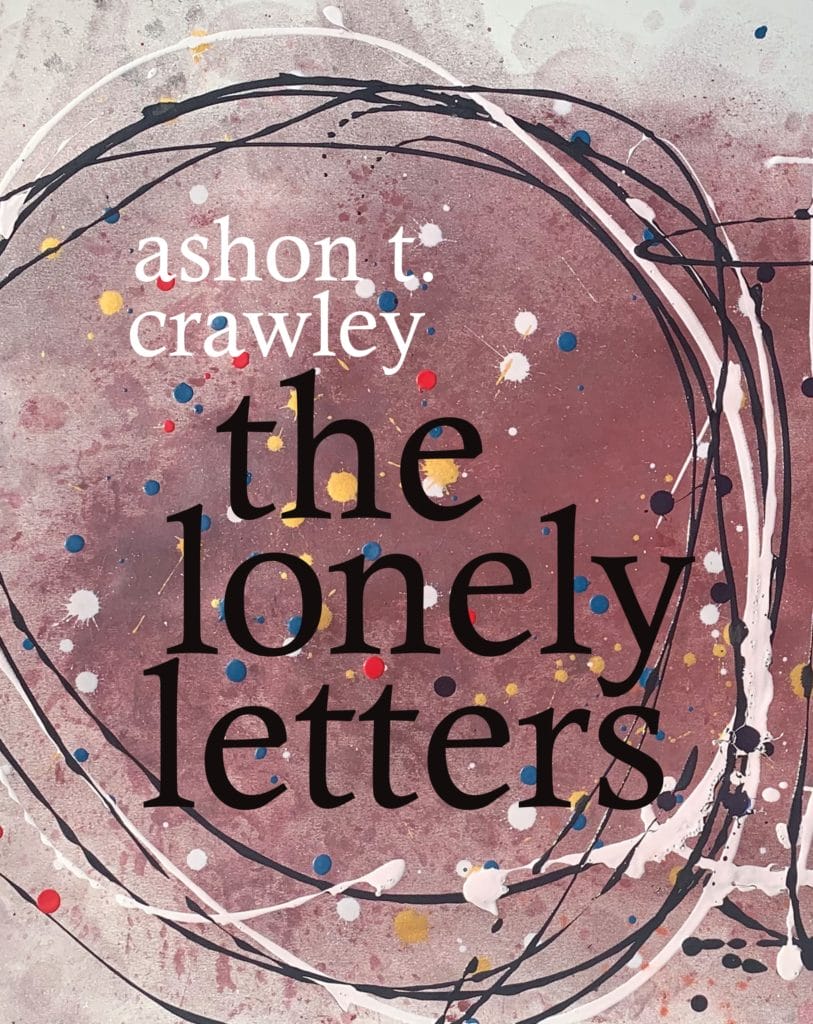Last semester I wrote a review of Ashon T. Crawley’s book The Lonely Letters for a class in my Appalachian Studies certificate program at Appalachian State University. I submitted it to a journal and never heard anything back from them so I’m posting it here! I really enjoyed reading this book, and the ways it overlapped with and was very distinct from my own experiences of growing up queer in a highly religious environment.
Enjoy!
By Ashon T. Crawley (Durham: Duke University Press Books, 2020)
$27.95, paper. ISBN 978-1478008248, 280 pp.
“Dear Moth,
It happened again and I don’t know what to make of it.” (13)
With that opening to breath3, the first of The Lonely Letters’ five main sections, Ashon T. Crawley tells us we’re coming into the story somewhere other than at its beginning. In the tradition of the finest storytelling, Crawley dispenses with lengthy exposition and throws us headlong into the deep end of the pool. As he moves, breathes, shouts, sings, and dances his way through a series of love letters–including letters about love–he expertly guides us deep into rhythmic cycles of contemplation, explanation, meditation, and exaltation. Like the music he discusses and the evangelical tradition he describes, we are invited in, made welcome, made to dance ourselves, even as he shares with us his discomfort and his frustrated and frustrating quest to feel at home as his entire Blackqueer and Blackpentecostal self.
A, the narrator’s only moniker for himself, tells his story by winding along back roads of recollection, weaving between deep insights into scholarship and philosophy, in long emails to a correspondent named Moth. At no point do we feel as though A is speaking to us. Instead, reading The Lonely Letters feels like being invited to read over A’s shoulder as he pours out his heart and mind and invites Moth to help him fill them back up. In this way we learn A’s experiences both of growing up in what he calls the Blackpentecostal church, in a family of preachers and singers and organists, growing into those roles himself, even forming a musical act with Moth and performing in church services, and of growing into what A distinguishes as his Blackqueer identity.
It might have been easy for another writer, another book, to describe the relationship between the narrator’s queerness and their evangelical upbringing only in terms of schism or severing. I faced the paradox of being expected to split the baby of myself in two, as Solomon suggested to the two purported mothers each claiming the same son, when my own evangelical family and upbringing condemned the queer man I am. Were I to author a similar memoir, it would be less a novel and more a polemic.
Time and again, however, A turns away from that easy path to revisit what matters to him: the technique of worship in which a familiar verse and chorus are repeated to reveal what’s underneath them, to create space for the spirit of what he’s saying to descend upon us. A teaches us this style of worship and then applies it to every corner of his life, religious, spiritual, or otherwise. As he says in and3, Crawley’s introduction to the book, in that style of worship “repetition allowed us to stay and linger and wait and tarry and think and imagine, repetition as limit became also possibility, delimitation the occasion for meditative opening and vulnerability.” (5) In this book, A’s repetition of questions for Moth, themes in his experiences, and methods of describing them serve to allow us to tarry and think and imagine.
Importantly, while our narrator, A, does not shy away from the pain of realizing the church traditions that have meant so much to him are no longer available to him as an out and self-accepting Blackqueer person, neither does he shy away from the deep love, inspiration, and community he found there. Nor is A shy about his eagerness to preserve and practice and celebrate the techniques of worship which so appealed to him: breath, noise, dance, song, and what he calls “the sociality of it all.” (63) Though there is a deep tension between the parts of A that come from his religious upbringing and the parts that come from who he is in relation to a society that condemns queerness, and especially Blackqueerness, Crawley stolidly refuses to offer us pat answers regarding how or whether A can heal the schisms within his life and himself. Like life, there are no easy answers in this book. Crawley uses the gaps where they might have festered in a lesser work to cultivate deep insights into what it means to be a person who is part of a community and not a part of it, to be someone who searches within himself for happiness while also seeking joy in the world around him. A repeated theme is of being within something and without it: within the church, and at the same time outside of it, but also of being in the spirit and of having the spirit within oneself, of being in Moth and of being spooned by Moth, of any person being one element in the world and of each person being a world unto themselves.
A’s Blackpentecostal technique of repetition lends the novel the aspect of a hymn, its narrative and philosophical refrains repeated between verses as the book progresses. In practical terms, I confess from time to time on hearing a repeated phrase I convinced myself I’d somehow slipped backwards a few pages, but in the end these motifs do not confuse or bore the reader. Instead they illuminate and expand the ideas Crawley, by way of A and his deep love for Moth, present to us on what it is to love, to be loved, and to long for expressions of love even when they are consciously withheld. We soon discover that not only has A effectively separated from his church but that Moth is also at some remove–and that A longs, deeply but respectfully, even reverently, for Moth to return: to return to A, certainly, but also to return A’s affections and his ability to express those affections.
Ultimately, The Lonely Letters is as much sermon, organ solo, prayer, philosophy lecture, history lesson, and heartfelt entreaty as it is a memoir. It invites Moth to open himself to queer love, invites us to revel in the spirit as experienced in A’s childhood church, to see the queer people who bury parts of themselves in order to stay within the sociality celebrated there, and to ask ourselves for what–for whom–would we leave our old selves behind. A is as born again as any of “the so-called Saints”, one part amen pew and one part moral watchdogs who smugly present themselves as having what A derides as “‘unshakable’ ‘faith’” (246), but his rebirth is into a life that welcomes love, welcomes joy, and most of all welcomes their sincere expression free of shame and in community and communion with like-minded others.
The Lonely Letters is not exactly a novel, not exactly a memoir. Crawley tells us in and3 that Moth is a composite character in part based on an unnamed person to whom he refers as Love. But if the character of Moth is not exactly “real,” he is also absolutely real and entirely familiar to any queer person who grew up in such an intense religious tradition, and perhaps especially to queer people who grew up in Appalachia. I could look back on my own high school or college years and name a dozen guys with whom I shared a similarly self-contradictory history of intense interpersonal connection, biographical overlap, intimacy, uncertainty, projection, estrangement, and reconnection.
In my experience, many queer people–myself included–drag our baggage around behind us and run the risk of being buried by it. But Crawley, through the narrator of A, opens that baggage up and empties it out. A tells us of the power of being emptied of breath, emptied of spirit, emptied of fear, emptied of sound, emptied of everything he has brought with him in hopes that he and Moth, he and the church, he and the world, can fill each other back up. The Lonely Letters is not a how-to for happiness, but it is a bold and poetic and moving assertion that happiness is worth pursuing and that the pursuit itself is self-validating. As someone who is deeply cynical about religion, I was surprised at how it moved me to see A, through repetition of a joyful noise, redeem the idea of redemption itself by accepting his desire and capacity for love, then offer it to others who need it more than he. This story does not begin at the beginning because there is no beginning per se. The story of humans needing love, of redeeming themselves by loving themselves and offering love to others, is as old as humanity itself and, if we’re lucky, that invitation to love will also have no end.

